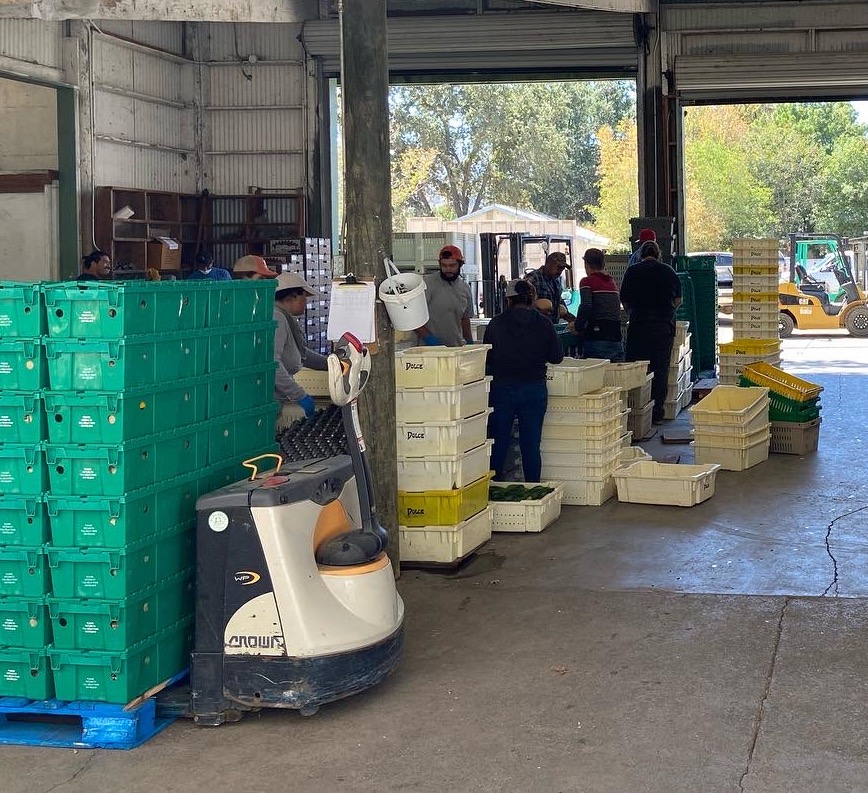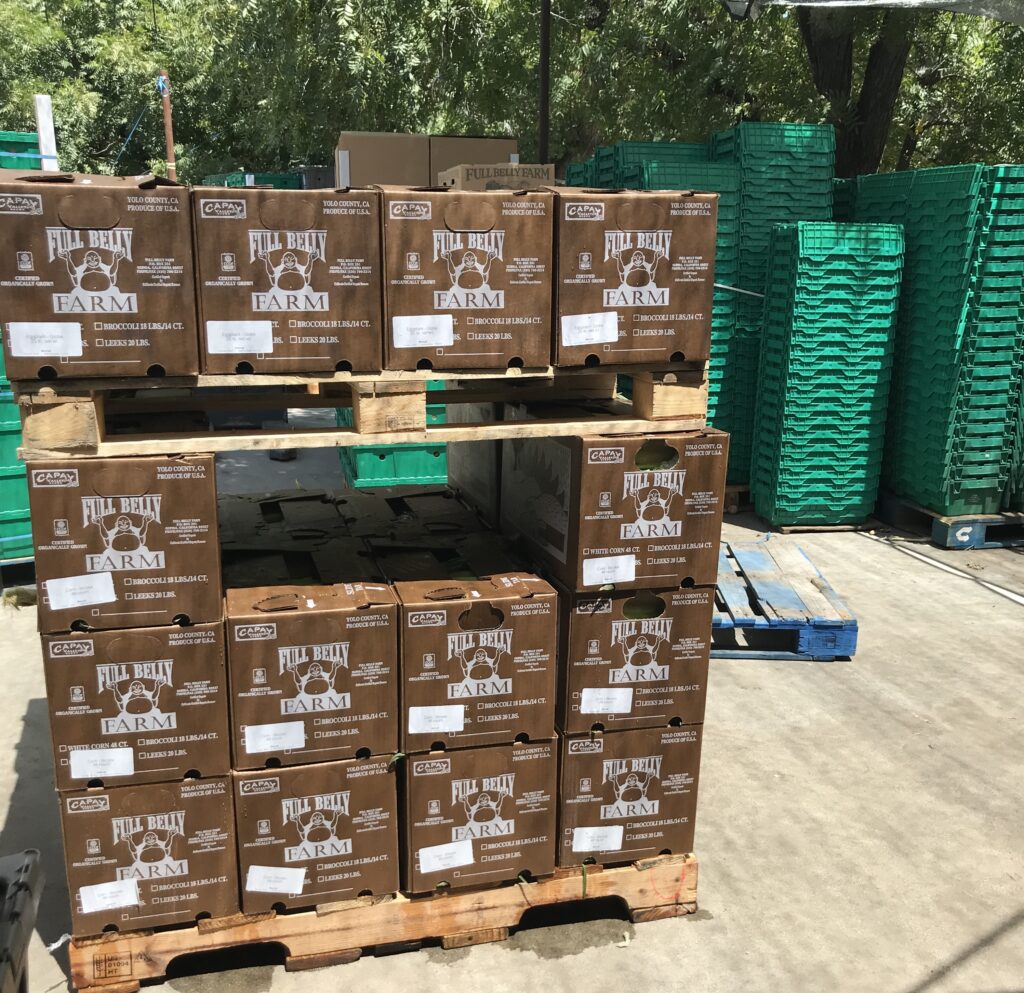There’s a regular rhythm to each day, though every day here is different, largely influenced by the time of year, and the day of the week. During the summer, everything is taken up a notch, not just the temperature. There is a lot of produce to water and harvest and only so many hours in the day to get it done. However those two Herculean tasks, tending to crops in the field and harvesting, are just part of what keeps us busy. A huge part of what we do is packing the produce, flowers, and other goods and then figuring out logistics to get everything on the correct truck so that everything arrives to its intended recipient. There’s no point in carefully growing great produce, and harvesting it at prime condition if it won’t get to you, or doesn’t arrive in good condition.
We’re packing produce all day long, but early afternoon is when we pack the CSA boxes and start loading trucks. Last summer, an intern took a time-lapse video that gives a glimpse into the hub of activity that happens in the later hours of the day. While it was filmed a year ago, this video could’ve been made last week and would look almost the same.
Here’s what you’re seeing:
CSA boxes are being packed on the right side of the screen. Earlier in the day, the components for the CSA boxes are prepped and when we’re ready to start “la línea” (the line), the various components are brought out. The boxes are put together assembly-line style, with one person (in this video it’s Alfonso) to place the box on the line (metal rollers that can be stretched out or compacted), several people putting one or two items in each box, a person to check that everything is in there and close the top, and another person to stack the boxes on pallets, eight boxes per layer. Most items are prebagged instead of loose to make it easier on the box packers; it goes faster, and it allows for better quality control and more consistent quantities. Plus some items need a bit of extra protection from the bag, carton, or basket that they’re in. Even though it’s an assembly line and even though someone does check, sometimes things slip past us and we double up on an item or someone ends up without something. We’re human, it happens!

All of the other activity is the truckload process! The truckload team has a list of all the delivery stops for each driver and what will be delivered at each one. Their first task is aggregating all those items by delivery stop on pallets and arranging them in a smart way (i.e. don’t put a box of wet things on top of something that needs to stay dry!). Word of advice: never challenge anyone at Full Belly to a game of Tetris or Jenga; they will win. Once pallets and inventos of flowers are ready, then they need to go on the correct truck in the correct order. There’s a lot of lists, a lot of labels, lots of double-checking and communicating about where things are being staged and what still needs to be done. Pallet jacks and hand trucks are in high demand, as are cardboard corners (“esquinas”), straps, and plastic wrap to help secure the cargo in place.

When the last items are loaded, the doors of the truck are closed, the refrigeration units are switched on so that the produce stays cool, and then the trucks are ready to head out really early the next morning for delivery! Hopefully optimally packed with everything that’s supposed to be there, no more and no less. Then the hot, tired truckload team is free to leave, to go cool off, probably with some melon.
Elaine Swiedler, CSA Manager
